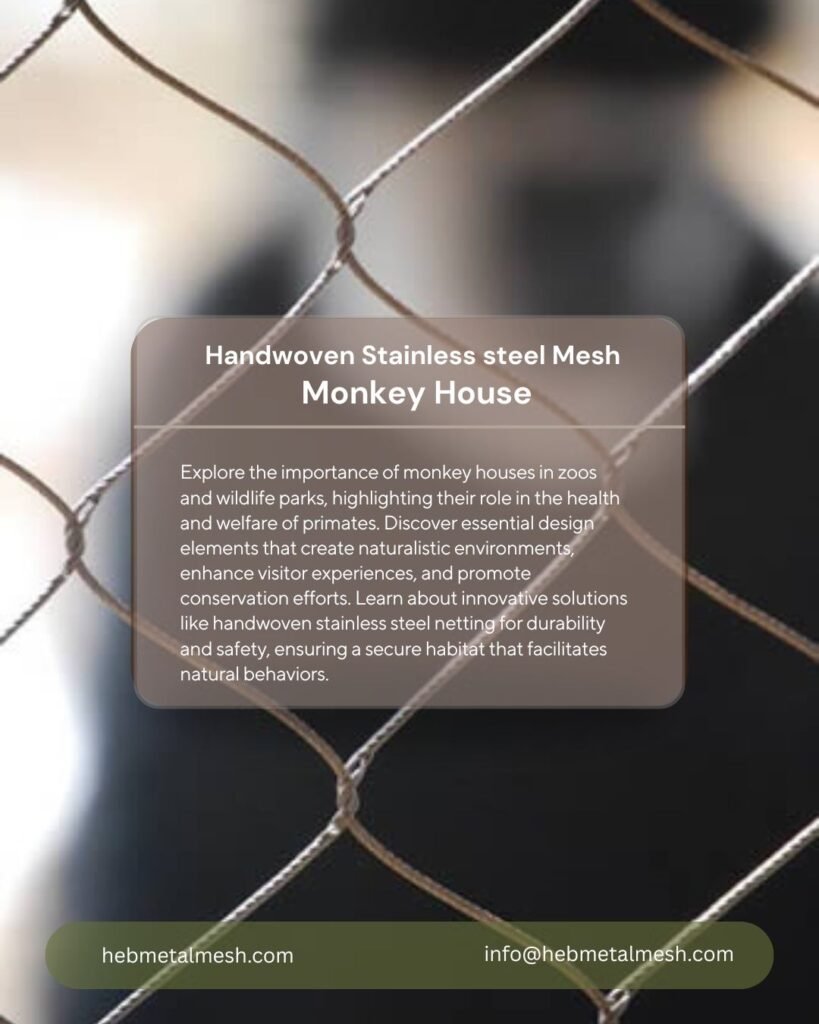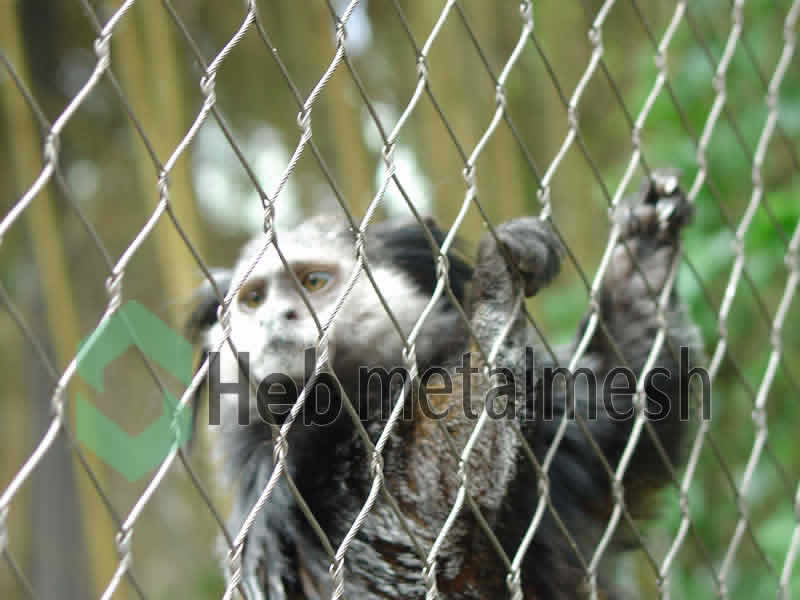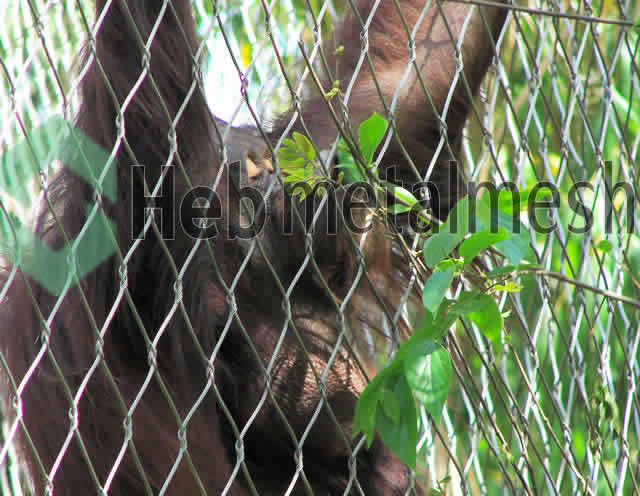Introduction to Monkey Houses
Monkey houses serve as vital habitats for primates in zoos and wildlife parks, providing a space that reflects their natural environments while prioritizing the needs of the animals and enhancing visitor experiences. These tailored structures are not only crucial for the health and wellbeing of the resident monkeys but also play an essential role in conservation efforts. A well-designed monkey house allows for a variety of behaviors, encouraging natural instincts and social interactions among the primates. It ensures that the living conditions mimic the complexities of their native habitats, which is particularly significant as many species face existential threats in the wild due to habitat loss and environmental changes.
The significance of creating suitable habitats for monkeys cannot be overstated. Such environments are engineered to enrich the lives of the primates, providing opportunities for climbing, foraging, and socializing, thus catering to their physical and psychological wellness. These environments also serve an educational purpose, allowing zoo visitors to gain insight into the primate’s natural behaviors, thereby fostering awareness and inspiring conservation actions.
In addition to promoting animal welfare, monkey houses enhance visitor experiences significantly. By incorporating design elements that allow for better viewing and interaction, zoos can create engaging educational programs that revolve around the lives of primates. This can stimulate public interest and support for conservation initiatives. Furthermore, innovative designs and materials can make these habitats more sustainable and resilient, promoting the overarching goals of environmental responsibility.
The evolution of monkey house design reflects a broader commitment to improving animal care standards and public engagement in conservation. By discussing the various aspects such as design elements, materials, and innovative fencing solutions, this guide will provide a comprehensive overview of what it takes to create the perfect monkey house.

Understanding the Needs of Monkeys
Designing a suitable monkey house requires comprehensive knowledge of the diverse needs and behaviors of various monkey species. One of the primary considerations is space requirements; different species exhibit varying levels of activity and space utilization. For example, larger species such as macaques require more expansive enclosures compared to smaller ones like tamarins, which thrive in vertically structured environments that encourage climbing. This spatial differentiation not only ensures physical well-being but also supports natural behaviors.
Environmental enrichment is another crucial factor in the design of a monkey house. Monkeys are inherently active and curious animals, necessitating an environment that stimulates their senses and encourages exploration. Naturalistic habitats can be achieved by incorporating trees, ropes, climbing structures, and water features, which mimic their native habitats. Additionally, providing various toys and foraging opportunities enhances cognitive engagement and reduces the likelihood of stress-related behaviors.
Social dynamics play a significant role in the needs of monkey species, as many are socially complex. Understanding the social structures of different species assists in creating group enclosures that facilitate natural interactions. Some species, like capuchins, thrive in larger social groups, while others, such as spider monkeys, might prefer smaller family units. Careful consideration should be given to the composition of groups to avoid aggression and ensure harmony within the monkey house.
Diets also play a pivotal role in the overall health of monkeys. A balanced diet that reflects their natural feeding habits is essential for maintaining physical health and well-being. This involves incorporating a variety of fruits, vegetables, seeds, and supplements that cater specifically to the nutritional needs of the species housed within the monkey house. By addressing these critical aspects of space, enrichment, social dynamics, and diet, the design of a monkey house can significantly enhance the quality of life for the monkeys and create a compelling experience for visitors.
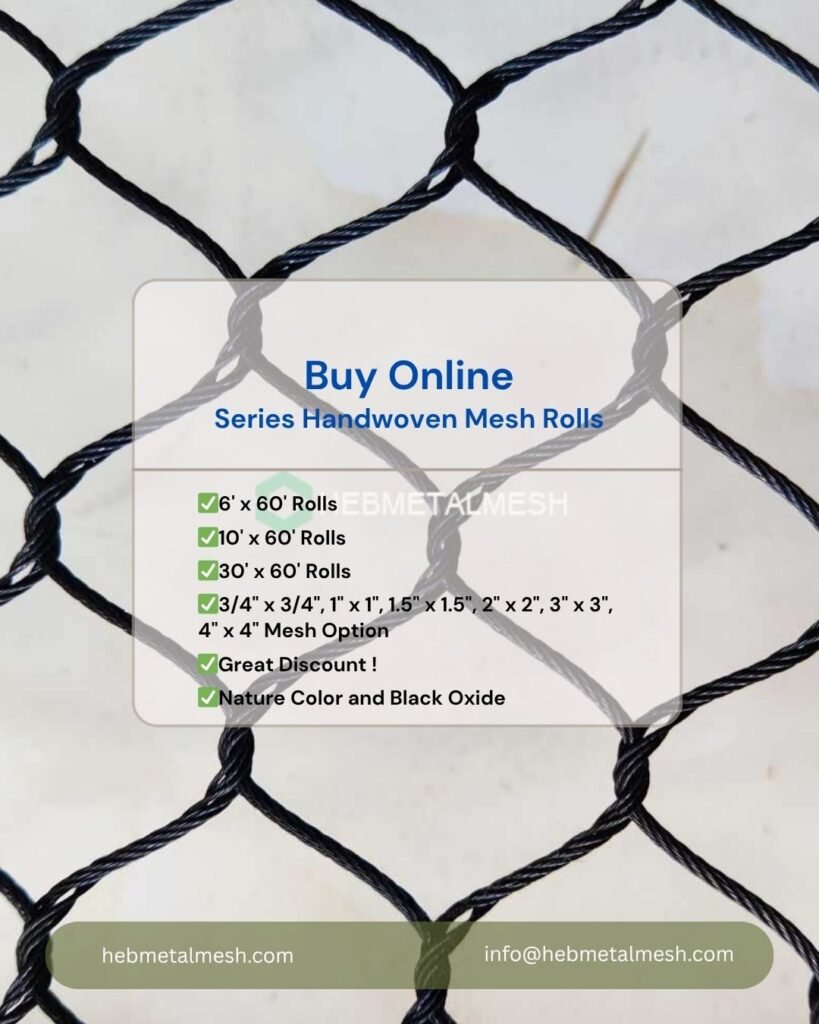
Essential Design Elements for Monkey Houses
Designing an effective monkey house requires careful consideration of several essential elements that ensure a stimulating and safe environment for the inhabitants. A well-thought-out layout is paramount, as it should mimic the natural habitats of monkeys, allowing for both exploration and social interaction. This involves creating spaces that are not only functional but also engaging, avoiding a sterile environment that can lead to boredom among the monkeys.
One critical aspect of the design is the incorporation of climbing structures. Monkeys are naturally agile and require vertical spaces to keep them physically active. Therefore, designers should integrate a variety of climbing apparatuses such as ropes, nets, and wooden platforms to encourage climbing and play. These structures should mimic the trees and branches found in their native habitats, providing multiple levels for the monkeys to explore and enjoy.
Additionally, water features are a valuable inclusion in a monkey house design. Incorporating shallow pools or streams can enhance the habitat’s realism and offer monkeys the opportunity to play and socialize in water. These features can also serve as essential sources of hydration while contributing to the overall aesthetic appeal of the area. Care must be taken to ensure that water features are safe, easily accessible, and minimize the risk of accidents.
Natural barriers are another significant aspect of monkey house design. Designers should utilize materials that align with the monkeys’ natural surroundings, such as thick vegetation or rocks, to create a sense of security while preventing escapes. These barriers not only ensure the safety of the animals but also help to simulate their natural environments, optimizing the monkeys’ mental and physical well-being.
In conclusion, a successful monkey house design must integrate thoughtful layout considerations, engaging climbing structures, inviting water features, and effective natural barriers to provide an environment that fosters the health and happiness of these intelligent creatures.

Innovative Fencing Solutions: The Case for Handwoven Stainless Steel Netting
When designing a monkey house, the choice of fencing material is crucial, as it affects not only the safety and well-being of the primates but also the experience of the visitors. One of the most effective and innovative fencing solutions gaining traction in modern zoo design is handwoven stainless steel netting. This material offers a multitude of benefits that can enhance both the functionality and visual appeal of a monkey house.
Durability is one of the primary advantages of handwoven stainless steel netting. Unlike traditional fencing materials such as wood or chain-link, which may degrade over time due to weathering, rust, or animal interactions, stainless steel is inherently resistant to corrosion and wear. This makes it an ideal choice for outdoor enclosures where maintenance can be challenging. Moreover, the handwoven aspect of the netting allows for a tighter weave, ensuring that it can withstand the physical activities of active monkeys while maintaining structural integrity over the long term.
Aesthetic appeal is another critical factor that distinguishes handwoven stainless steel netting from conventional options. Its sleek, modern appearance seamlessly integrates with various architectural styles, thereby enhancing the overall visual experience of the monkey house. The reflective properties of stainless steel can create intriguing light effects while providing a sense of openness, encouraging visitor engagement without compromising animal safety. This is particularly important in zoos, where creating a blended experience for both animals and visitors is increasingly prioritized.
Safety, of course, is paramount when it comes to housing primates. Handwoven stainless steel netting provides superior containment capabilities compared to other fencing materials, significantly reducing the risk of escapes or injuries. Its strength ensures that even the most agile monkeys remain secure within their habitats, offering peace of mind to zookeepers and visitors alike. Considering these substantial benefits, handwoven stainless steel netting represents a forward-thinking choice for modern monkey house design.

Longevity and Durability: Why Stainless Steel Lasts
Handwoven stainless steel netting has become an essential material for constructing modern monkey houses, offering unparalleled durability and longevity. With a life expectancy that can exceed 30 years, this innovative material is designed to withstand a variety of environmental challenges, making it an ideal choice for zoos and wildlife parks that prioritize the well-being of their animals as well as aesthetics and safety.
One of the standout features of stainless steel is its exceptional resistance to harsh weather conditions. Unlike conventional materials that may corrode or degrade over time, stainless steel is engineered to endure rain, snow, and extreme temperatures without compromising its structural integrity. This resilience not only ensures that the monkey house remains secure and functional but also reduces the risk of costly repairs or replacements that can burden zoo budgets.
Additonally, the ability of stainless steel to endure high winds is critical in maintaining the safety and comfort of the resident monkeys. The handwoven design of stainless steel netting allows for flexibility and strength, which is crucial in preventing damage during stormy weather. This ensures that the monkeys can thrive in an environment that mimics their natural habitat while also allowing for optimal safety from external elements.
Investing in stainless steel for monkey houses leads to significant long-term cost savings. While the upfront investment may be higher compared to other materials, the longevity of stainless steel leads to reduced maintenance requirements over time. Zoo operators can focus on enriching the lives of their inhabitants rather than worrying about frequent renovations or repairs. Additionally, a well-maintained monkey house constructed from durable materials like stainless steel enhances the overall visitor experience, making the zoo a more attractive destination for families and animal enthusiasts alike.

Aesthetic Appeal: Color and Design Options for Fencing
When designing a monkey house, the fencing is a crucial component that serves both functional and aesthetic purposes. The right choice of color and design not only enhances the visual appeal of the monkey house but also ensures that the structure integrates harmoniously with its environment. One of the primary considerations is to select finishes that resonate with the natural surroundings. Natural finishes, like wood tones and earthy hues, help in creating an inviting atmosphere, making the monkey house appear as a part of the landscape rather than an artificial enclosure.
On the other hand, black oxide finishes are increasingly popular for their modern appearance and durability. This color option presents a striking contrast against lush greenery, drawing attention to the monkey house while maintaining a sleek aesthetic. The dark color not only looks sophisticated but also offers practical benefits, such as reduced visibility of wear and tear over time. With the combination of aesthetic and functional aspects, choosing the appropriate fencing color leads to a more engaging experience for zoo visitors.
Furthermore, considering the design of the fencing is essential. A vertical bar design with varying spacing can provide visual interest while ensuring the safety and security of the monkeys. The incorporation of playful elements, such as decorative motifs that echo the natural traits of the species in the monkey house, can add a level of whimsy, captivating the audience’s attention. Such creative design solutions can establish an inviting atmosphere for visitors, encouraging them to observe and appreciate the monkeys in their habitat.
Ultimately, the selection of colors and design for the fencing surrounding the monkey house directly impacts the overall aesthetic appeal. By thoughtfully integrating natural and modern elements, the design can reflect the beauty of wildlife while enhancing the visitors’ experience, making it memorable and engaging.
Safety First: Protecting Monkeys and Visitors Alike
When designing a monkey house, ensuring the safety of both the resident primates and visiting guests is of utmost importance. This responsibility can be effectively met through the implementation of various innovative safety features, with handwoven stainless steel netting emerging as a critical component. The strength and durability of this material provide significant protection against potential escapes and unintentional interactions that could jeopardize both monkeys and human visitors.
Handwoven stainless steel netting is specifically designed to be resistant to breakage, ensuring that it withstands significant physical stress and does not compromise during regular wear and tear. Its intricate design allows for proper ventilation while simultaneously providing an unobtrusive barrier between the animals and the public. By utilizing such robust materials, designers can create a sanctuary that prioritizes animal welfare while fostering a safe environment for people to observe these fascinating creatures up close.
In addition to employing durable materials, the layout of the monkey house should also be carefully considered. Thoughtful design elements, such as strategically placed barriers and viewing platforms, can enhance safety without sacrificing visibility for visitors. Integrating these features ensures that guests can enjoy intimate access to the monkeys while allowing animals to exhibit their natural behaviors in a protective setting. Moreover, consistent monitoring and regular safety audits play a crucial role in maintaining the integrity of the monkey house, making it imperative that staff are trained to identify potential risks promptly.
Ultimately, the blend of innovative design and robust safety measures facilitates a harmonious experience for both monkeys and visitors. Ensuring the well-being of both parties leads to a successful zoo environment, where educational and entertaining experiences can thrive, laying the groundwork for future conservation efforts.
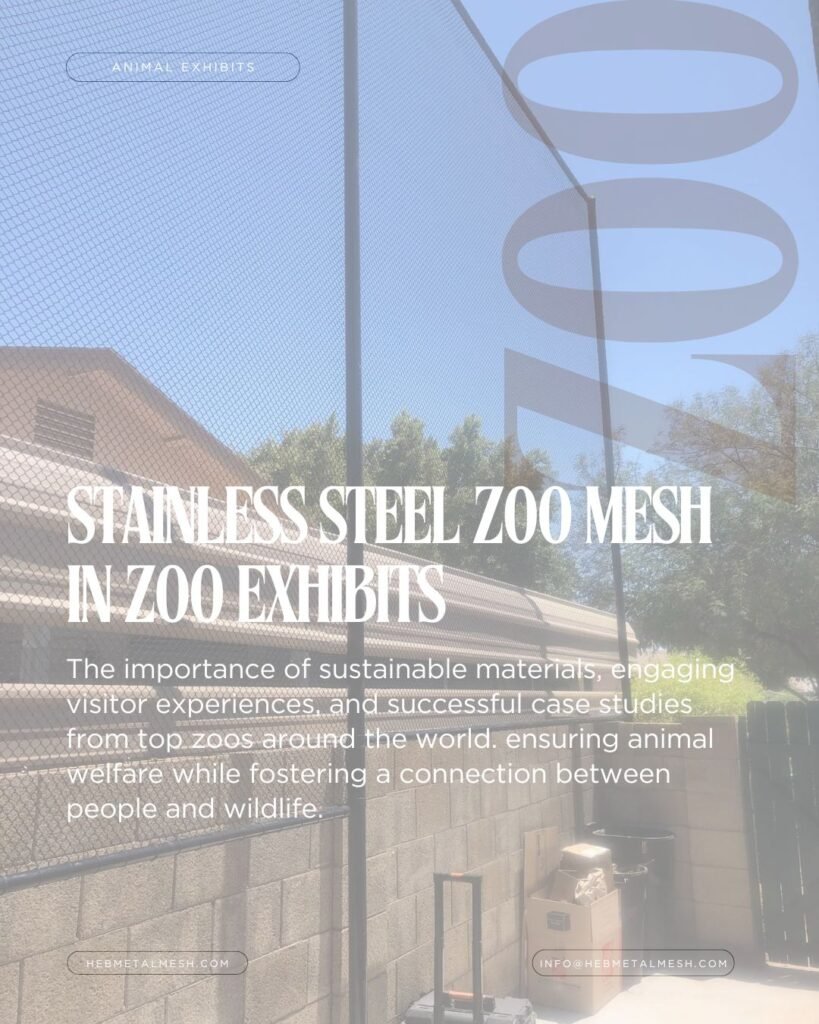
Case Studies: Successful Monkey Houses Using Stainless Steel Netting
Across the globe, numerous zoos and wildlife parks have embraced the innovative use of handwoven stainless steel netting in their monkey houses, yielding significant benefits for both the animals and the facilities. One notable example is the recent renovation of the primate exhibit at the San Diego Zoo, which has seen remarkable changes since the installation of stainless steel netting. This upgrade not only provided a stronger and more secure environment for the monkeys but also enhanced their visibility and engagement with visitors. By allowing for unobstructed sightlines, the zoo has increased educational opportunities, fostering a deeper understanding of primate behavior among guests.
Similarly, the Moscow Zoo has reported substantial improvements following its decision to incorporate stainless steel netting into its monkey habitats. The durability of the material has drastically reduced maintenance costs; previous issues with wear and tear on traditional enclosures have been alleviated. Staff members note that the installation of stainless steel netting has allowed for better airflow and sun exposure, promoting healthier living conditions for the primates and enriching their overall environment. This case study illustrates that the advantages of using stainless steel netting extend beyond simple aesthetics, contributing to animal welfare and longevity.
Furthermore, a wildlife park in Australia has successfully implemented stainless steel netting in its monkey house, resulting in enhanced safety measures against potential escape or predatory threats. The durability and resistance to corrosion of stainless steel have led to longer-lasting enclosures that require less frequent repairs, enabling the staff to focus more on animal care and public engagement. These success stories exemplify the efficacy of stainless steel netting in modern monkey houses, demonstrating its ability to elevate the overall experience for both animals and visitors. As further designs evolve, such examples serve as compelling evidence for the continued investment in humane and innovative facilities for wildlife.

Conclusion: The Future of Monkey House Design
As we reflect on the critical aspects of designing a monkey house, it becomes clear that innovation plays a fundamental role in enhancing the living conditions of these animals while simultaneously enriching the experiences of visitors. Key takeaways from our discussion include the necessity of incorporating naturalistic elements into enclosures, which not only mimic the monkeys’ native habitats but also promote their well-being and health. By using advanced materials and techniques, designers can create environments that are safe, engaging, and conducive to the natural behaviors of primates.
Moreover, the importance of choosing materials that allow for flexibility and adaptability in monkey house design cannot be overstated. For instance, the potential use of handwoven stainless steel netting offers a modern solution that provides both security for the animals and a seamless viewing experience for zoo-goers. Such innovations in design contribute to a more interactive environment, allowing for improved observation of the monkeys without compromising their safety or comfort.
Stakeholders and zoo designers are encouraged to embrace these modern solutions as they pave the way for the future of animal care and conservation. By prioritizing innovations that focus on sustainability, animal health, and visitor engagement, zoos can enhance their role in education and conservation efforts. The future of monkey house design lies in our ability to merge architectural ingenuity with a profound understanding of primate needs, offering a rich experience that celebrates both the beauty of these intelligent creatures and the responsibility of keeping them safe and healthy.
